Emergency Management Resources
"Incidents typically begin and end locally, and are managed on a daily basis at the lowest possible geographical, organizational, and jurisdictional level." - Local Gov't Guide to Recovery
Every Disaster Starts and Ends at The Local Level
The Colorado flooding events of September 2013, as well as 911, Hurricane Katrina and other disasters, have taught many that municipal officials have a primary responsibility and burden of managing emergency events. The Department of Homeland Security (DHS) Presidential Directive 8 (HSPD-8) established the National Response Framework (NRF) as a guide for preparing emergencies. The NRF emphasizes that local agencies must manage disasters on their own entirely or in some cases, without state or federal assistance for at least the first 24 to 72 hours. Part of this preparation involves engaging public works in the planning and response of emergencies. HSPD-8 officially recognized Public Works officials as first responders; and DEMHS established Public Works as an individual Emergency Support Function (ESF-3) to include them in the planning and response for Colorado emergencies.
Public works employees are officially regarded as first responders as they have a pivotal role in planning, preparing and responding to disasters. It can be overwhelming to stay abreast of laws, receive the proper training, and develop the necessary protocols needed for emergency management, especially for small agencies. Emergency response preparation and training are critical to save valuable time and energy.
"When the incident occurs, what hat will you wear?"
These resources are provided to help local governments be better prepared when disaster strikes and to help Publics Works departments understand their role as FIRST RESPONDERS.
- Emergency Operations Methodology for Extreme Winter Storm Events
- APWA Practitioner - 2013 Colorado Floods: Five Years Later
- Lessons Learned for Puerto Rico's Transportation Infrastructure after Hurricane Maria
- FEMA Debris Management Plan Checklist
- Public Assistance Debris Removal Tips
- FEMA Debris Removal Quick Guide
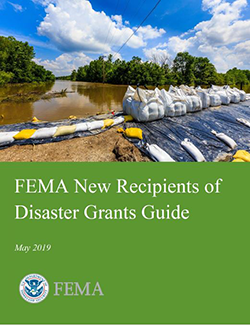
FEMA New Recipients of Disaster Grants Guide - May 2019 - The FEMA New Recipients of Disaster Grants Guide is intended to provide streamlined guidance to state, territorial, and tribal governments on the essential elements of PA, IA and HMGP and required actions to request, initiate, and receive FEMA disaster assistance grants.
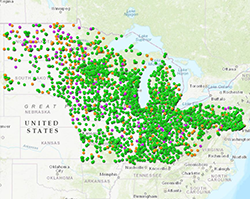
Disaster Debris Recovery Tool - EPA Region 5 has developed an interactive mapping tool of 12 types of recyclers and landfills that manage disaster debris. This tool provides information and locations of over 6,000 facilities throughout Region 5 and surrounding states capable of managing different materials which may be found in disaster debris.
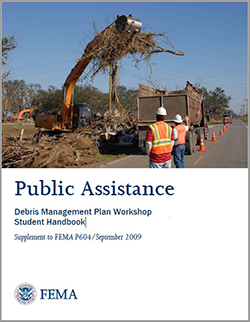
Public Assistance Debris Management Plan Workshop Student Handbook - The FEMA Public Assistance Program developed this handbook to assist jurisdictions with debris management planning. The handbook presents a list of important considerations which should be addressed by jurisdictions as they complete the debris management planning process, and can be used by a jurisdiction for both the development of their first plan and the review of an existing plan.

FEMA Core Capability Development Sheets - The National Preparedness Goal establishes 32 Core Capabilities to address the greatest risks to the nation. FEMA's Core Capability Development Sheets provide tools that organizations can use to build or sustain their capabilities and close identified gaps. Each sheet provides the following information, tailored to the Core Capability: - Training courses - Standardized capability targets - Nationally-typed resources - Planning partners - Validation support. The sheets are also available here.
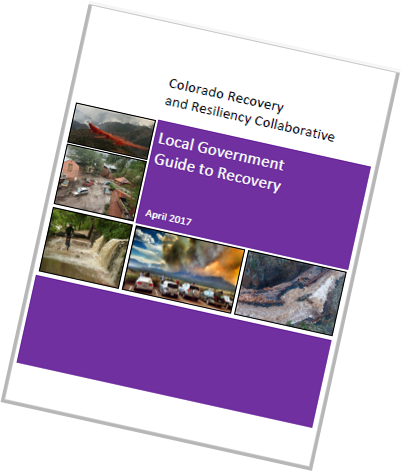
Local Government Guide To Recovery - Developed by the Colorado Recovery and Resiliency Collaborative after Colorado's 2013 flooding event, this Guide provides lessons learned from a local agency perspective. It provides key considerations for the efforts between local governments and non-governmental partners; a Planning Tool for those trying to develop an emergency management program; and can serve as a Reference Manual when an incident occurs.
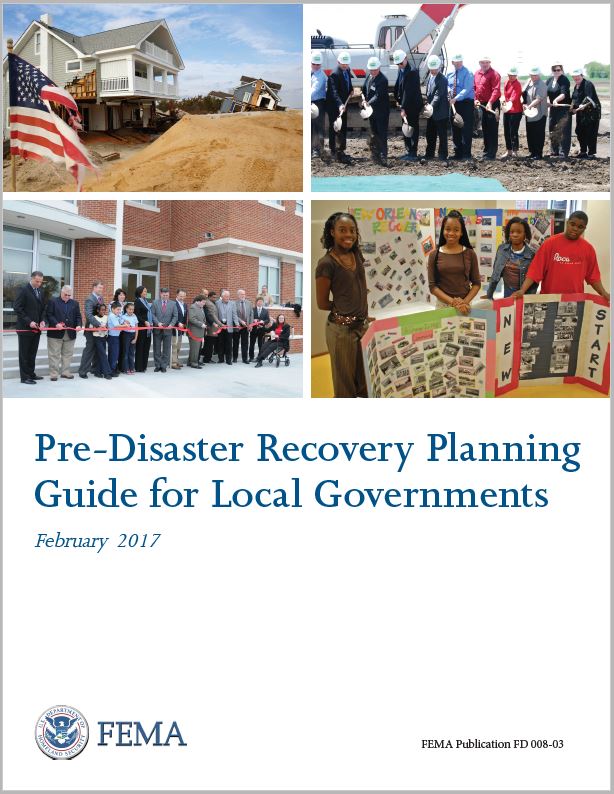
Pre-Disaster Recovery Planning Guide for Local Governments - Developed by FEMA, this planning guide is designed to help local governments prepare for recovery by developing pre-disaster recovery plans that follow a process to engage members of the whole community, and create an organizational frameworkfor comprehensive local recovery efforts. It covers all aspects of recovery planning - developing a team, key activities, objectives, plan development-components, implementation, and maintenance.
OSHA Emergency Preparedness and Response - Emergencies can create a variety of hazards for workers in the impacted area. These pages provide information on how to prepare and train for emergencies and the hazards to be aware of when an emergency occurs.
Continuity of Operations Plan (COOP) - It is highly recommended to document your overarching agency's strategy, policies, and procedures required to support the agency during an emergency situation. Where will you continue Government Operations? What are your essential functions? How will you coordinate with State, local and tribal partners and the private sector? Who will your agency contract with for water, food, or gas?
VT Mitigating Flood Damage to Local Roads - Properly constructing and maintaining a road drainage system is one of the most effective ways to reduce flooding damage.
Safety Awareness for Responders to Hurricanes: Protecting Yourselves While Helping Others - This is a Training Tool to raise awareness of the hazards and protective measures when responding to the aftermath of a hurricane. Available as a PDF or PPT, English or Spanish.
Videos:
September 2013 Floods - CDOT's Story - A moving Video highlighting CDOT's story of recovery and goal of reopening highways.
